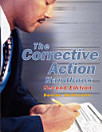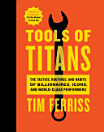Remote Auditing: A Quick and Easy Guide for Management System Auditors
About this ebook
The purpose of auditing is to verify the conformance of an organization's processes and management system to defined requirements. Depending on the type of audit and the objective, the conformance criteria vary. The standard against which an audit may be conducted could be an organization's own procedures and documented requirements; a management system standard such as ISO 9001, AS9100, or IATF 16949; customer-specified requirements; or government regulations. Even with the constraints of remote auditing, these results still need to be achieved. Audits help us to identify problems, risks, good practices, and opportunities to better serve our customers.
This book deals with the various aspects of remote auditing, including planning, risk assessment, logistical constraints, conducting the audit, and providing an informative audit report.
Chapters include:
Remote Auditing Overview
Identifying and Managing Risk
Planning the Remote Audit
Prepping for a Remote Audit
Conducting a Remote Audit
Writing the Audit Report
Follow-Up and Future Planning
Ratings and reviews
- Flag inappropriate
About the author
Denise Robitaille has authored a dozen books, including: The 9 Keys to Successful Audits. She is chair of ISO/PC 302, the project committee that revised the ISO 19011, Guidelines for auditing management systems, standard.
Denise is an active member of the ISO/TC 176 Auditing Practices Group that develops papers providing guidance on auditing. She has participated internationally in standards development for more than 18 years. Denise is a Fellow of the American Society for Quality and an Exemplar Global certified lead auditor.
She is internationally recognized for her work and is a frequent speaker at conferences.
She continues to help companies achieve ISO 9001 registration and to improve their quality management systems.






